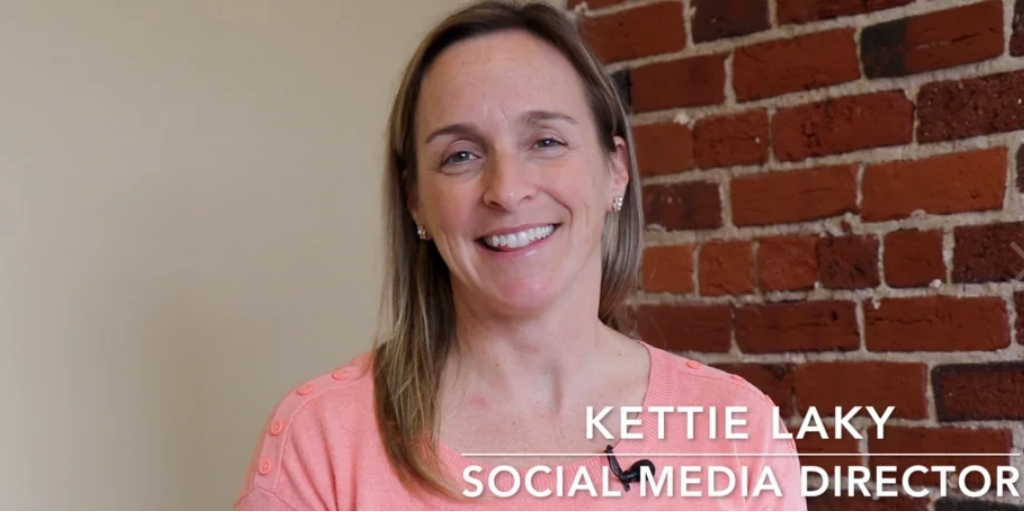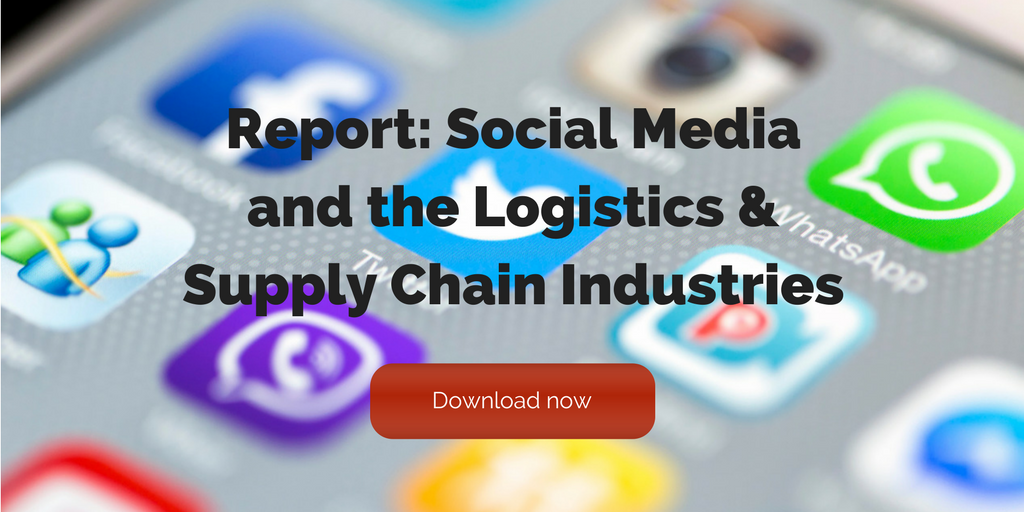
by Fronetics | Dec 17, 2018 | Blog, Content Marketing, Data/Analytics, Marketing
Implementing automation can help supply chain marketers become more efficient and more successful in earning and converting leads. Here are our most-viewed automation posts of the year.
Automation is changing the way supply chain marketers do their job. When properly executed, automation can drive efficiency and reduce time spent on repetitive tasks, freeing up marketers to focus on other priorities.
Marketing automation is the process of using software to complete repetitive marketing tasks designed to nurture sales leads, personalize marketing messages and content, and — in the process — save marketers time and effort. Supply chain marketers are using marketing automation to streamline processes and increase qualified leads.
Jumping into marketing automation can be overwhelming. Utilizing the right software and knowing where to implement automation into your marketing processes will help nurture leads and get you back to more pressing tasks.
[bctt tweet=”Utilizing the right software and knowing where to implement automation into your marketing processes will help nurture leads and get you back to more pressing tasks.” username=”Fronetics”]
Here are our top automation posts from 2018 that define how automating your marketing processes can help your efforts.
Top 5 automation posts 2018
1. Our 6 Favorite Marketing Automation Tools for Supply Chain and Logistics Marketers
The term “marketing automation” refers to a variety of tools used to automate the process of personalizing leads’ interactions with your business. The sheer variety of these tools can sometimes be overwhelming — so we’ve pulled a few of our favorites in the categories of email workflows, social media scheduling tools, and customer relationship management. Read full post
2. Increase Leads by 451% through Marketing Automation
Automation is changing today’s supply chain, and not just because robots and autonomous vehicles are scooting around warehouse floors. Supply chain marketers can use automation to drive efficiency and improve our success rates. Read full post
3. Marketing Automation: Social Media Scheduling Tools
Managing your business’ social media accounts might sound like a simple task — a fun one, even. But once it falls on your plate, it won’t take you long to realize: it’s a lot of work. Social media scheduling tools can make your job much easier — and improve your bottom line. Here are some of our favorite tools and some helpful tips for using them. Read full post
4. 5 Tips for Using Automation in Email Marketing
Marketing automation can help you provide more personalized experiences for your prospects through email. It can also save you a significant amount of time, as you won’t have to create individual emails each time a particular prospect takes a particular action.
But not everything can, or should, be automated or scheduled in advance. As you begin to incorporate automation in email marketing, here are 5 tips to get you started. Read full post
5. Marketing Automation: CRM (Customer Relationship Management)
Integrating marketing automation into your CRM strategy can improve efficiency, streamline workflows, and make communications more consistent. Here are a few examples of how CRM and marketing automation can work in tandem. Read full post
Related posts:


by Fronetics | Dec 13, 2018 | Blog, Content Marketing, Logistics, Marketing, Supply Chain
These are the top 10 most-viewed supply chain and logistics posts of 2018.
Our goal throughout the year is to provide our readers with the latest news and happenings in the supply chain and logistics industry, with a focus on content marketing. We hope to educate and enlighten our readers with industry insight, tips, and trends to stay ahead of the competition.
This year we’ve taken a deeper look at supply chain and logistics companies that have experienced the highs (Google, Amazon) and lows (Tesla, KFC) of running supply chain and logistics businesses. These posts have highlighted how we can all learn a thing (or two) from their accomplishments and, of course, their mistakes.
[bctt tweet=”This year we’ve taken a deeper look at supply chain and logistics companies that have experienced the highs (Google, Amazon) and lows (Tesla, KFC) of running supply chain and logistics businesses. These posts have highlighted how we can all learn a thing (or two) from their accomplishments and, of course, their mistakes.” username=”Fronetics”]
Here’s a look at our most popular supply chain and logistics posts this year.
Top 10 supply chain and logistics posts in 2018
1. 10 Must-Follow Supply Chain and Logistics Blogs in 2018
What are your favorite supply chain and logistics blogs? Fronetics wants to tell you about some of our favorite blogs that we follow. Read full post
2. Drawing Lessons from Tesla’s Supply Chain Issues
This guest post from Argentus Supply Chain Recruiting examines Tesla’s recent supply chain woes. Argentus also shares the biggest takeaways to help you prevent similar blunders. Read full post
3. Top 3 Logistics and Supply Chain Blogs of 2018
We love hearing what blogs you enjoy reading and find valuable. There are lots of great industry options, so we know it’s not easy to narrow down your favorites. We had lots of great responses, but only Women in Trucking held its spot on our list of the top logistics and supply chain blogs from last year. Read full post
4. KFC Ran Out of Chicken in the UK: What Supply Chain Lessons Can We Learn?
There’s another unfortunate entry in the annals of Supply Chain failures that burst into the wider world of business and pop culture: More than half of the UK’s Kentucky Fried Chicken stores closed because they ran out of chicken this year. Argentus Supply Chain Recruiting examines the lessons we can learn from the restaurant chain’s blunder. Read full post
5. How Google Does Supplier Diversity
In 2014, Google launched a supplier diversity program to ensure that its staff had the ability to search large and small vendors when purchasing products or services. The tool it developed has helped Google employees create relationships with small businesses, defined as U.S.-based companies with $15 million or less in annual revenue and 50 or fewer employees. Google felt these companies often have a specialized and innovative product or service but might never be discovered simply because of their size. Read full post
6. Infographic: Influencer Marketing and the Supply Chain
Influencer marketing is a form of marketing in which marketers identify individuals that have influence over potential buyers and create marketing campaigns and activities around these influencers. Why is this so effective? Because buyers trust influencers talking about your products and services more than they trust you talking about yourself. Read full post
7. Valentine’s 2018 Supply Chain Infographic
Consumers spent a near-record $19.2 billion on Valentine’s Day 2018, up from $18.2 billion in 2017. According to NRF’s annual survey, over half of the country participated (55%) in the romantic holiday, spending just over $140 on average. Read full post
8. Five Go-To Supply Chain Websites
Following leading websites is a great way to keep up with the latest news and information about happenings in the supply chain and logistics industry. Here are our five favorite supply chain websites. Read full post
9. Video: Why Inbound Marketing is Better than Outbound Marketing for Supply Chain Marketers
Marketers are constantly coming up with new and trendy ways to attract leads. With endless platforms available to us, it can be overwhelming for even the most seasoned marketers to know where they need to focus their efforts. Outbound marketing used to be the ‘go to’ for generating leads, but this is simply no longer the case. Marketers across industries have found that inbound marketing has many advantages over traditional marketing practices. Read full post
10. 5 Email Marketing Trends Supply Chain and Logistics Marketers Need to Know
More people are using email than ever before (close to 3.8 billion worldwide). Fronetics works with supply chain and logistics businesses every day, so we have a first-hand understanding of how email marketing can be successful in these industries. Read full post
Related posts:


by Fronetics | Dec 3, 2018 | Blog, Content Marketing, Logistics, Marketing, Social Media, Supply Chain
Social media is a valuable tool for businesses, but only if they use it to their best advantage and avoid these three common mistakes.
81% of small and medium businesses use a social platform. And we all understand why. By 2019, it is estimated that there will be around 2.77 billion social media users around the globe. That’s a lot of potential customers.
[bctt tweet=”There’s no disputing social media is an effective way to increase brand awareness and generate leads. But it can be fairly useless if your company isn’t doing it right.” username=”Fronetics”]
So, there’s no question as to why companies are jumping on the social media bandwagon. And there’s no disputing social media is an effective way to increase brand awareness and generate leads. But it can be fairly useless if your company isn’t doing it right.
Top three social media mistakes companies make
Mistake #1: Using objectives instead of strategy
Social media platforms are continually making changes and updates to improve the user experience. In order to weather these changes and keep your audience engaged, it’s imperative to have a clear strategy that includes types of content, frequency, and pillar topics.. Posts should reflect your brand, so make sure posts follow style guidelines and reflect your specific tone.
A strategy will also help prove ROI. Social Media Examiner’s 2018 Social Media Marketing Industry Report found that only 44% of marketers agree that they know how to measure social media ROI. That means two-thirds of marketers don’t know whether or how much their marketing efforts are paying off when it comes to the use of social media. A strategy that incorporates defined goals, tracking and measuring will help prove data-driven ROI and improve your social media presence.
Mistake #2: Using the most popular social media platforms
Not all social media platforms are created equal. In fact, all social media channels have a differentiating quality that makes them appealing to specific audiences. Start by identifying where your target audience is spending their time. For example, 81% of millennials view their Twitter account on a daily basis. If your company is looking to capture millennials as leads, your social media efforts should certainly include Twitter.
Once you’ve determined where you should be posting, concentrate on creating content that caters to those specific platforms. Lots of companies post the same content across all of the apps they use. We understand how easy that is for marketers, especially with automation tools. But the foundation of social engagement is authenticity, something that is hard to achieve when posts are the same across all channels. Work to create content — including video and images — that caters to specific platforms to build brand awareness and loyalty.
Mistake #3: Promoting instead of connecting
Social media is all about engagement. Users don’t want to engage with brands that are pushing their products and services. Users want informative, interesting, and yes, even fun content. Companies need to focus on creating content that leaves their users wanting more.
Companies that are succeeding on social media are finding innovative and creative ways to relate to users. When you engage and get users involved in your story, you create long-lasting customer relationships. Storytelling creates an emotional bond with your company and drives brand loyalty.
Greg Hadden, executive creative director of Motive Made Studios, sums up the power of connecting with users: “What often gets lost is the fact that good storytelling is potent stuff. It has the power to make people want to believe and to belong, which is the goal of all storytellers. We’re all selling something, be it an idea, an exploration of the human condition, or say, a vacuum cleaner. It’s no mistake perhaps that good stories often create products.”
Final thoughts
Social media platforms are a powerful resource that can help your business grow. But they have to be used correctly. Creating a documented strategy will help shape your brand’s social media presence and give you milestones to test and tweak your progress. Need help creating a social media strategy? Let us help.
Related posts:


by Fronetics | Nov 12, 2018 | Blog, Content Marketing, Logistics, Marketing, Social Media, Supply Chain
Social platforms create an opportunity to connect with prospects but only if your efforts align with customer preferences. Here’s how brands can focus on creating content that customers actually want.
In 2018 social media platforms have made a concerted effort to keep their platforms, well, social. User experience is the top priority, and many brands and businesses feel like they’ve been pushed to the back burner.
Businesses aiming to increase brand awareness must think long-term when it comes to social media. Social media marketers need to engage with users, not simply disrupt the user’s experience. This means that content shared by a brand needs to be relevant, useful, and let’s face it, visually engaging.
The overlap between brands and users
In the 2018 Social Sprout Index, researchers found that 61% of marketers create posts that teach readers something. But that’s not all, 59% of consumers reported wanting to read posts that teach something. The connection is obvious.
[bctt tweet=”In the 2018 Social Sprout Index, researchers found that 61% of marketers create posts that teach readers something. But that’s not all, 59% of consumers reported wanting to read posts that teach something. The connection is obvious.” username=”Fronetics”]
Businesses looking to increase user engagement on social platforms need to focus on providing users with what they want. Users want you to teach them. So, showcase why your brand is a leader in your industry or highlight how your products or services can be the solution to a problem.
Most social media users are still using platforms to connect with friends and family, so it’s imperative for businesses to focus on authentic engagement. This can only be accomplished by connecting readers to useful and informative information.
“The most enlightened social marketing strategy integrates awareness and consideration stage content — opening the door with entertainment and inspiration, then carrying audiences across the threshold with education, information about new product offerings and discounts and sales.” Social Sprout Index 2018
And while 80% of marketers report increasing brand awareness as their primary social media goal, it’s not always easy to know how to get started creating relevant content that will resonate with users. Here is Kettie Laky, Social Media Director, to explain how businesses can be helpful to users on social platforms.
Video: How businesses can be helpful on social platforms
Takeaway: Focus on what’s important
It’s time for marketers to stop wasting time and resources on content that doesn’t resonate with users. Aligning priorities between what users want and what marketers are producing is key to creating long-lasting relationships with prospects. Brands who are actually helpful, not intrusive, will reap the benefits of their hard work.
Related posts:


by Fronetics | Nov 7, 2018 | Blog, Content Marketing, Logistics, Marketing, Social Media, Strategy, Supply Chain
Companies can reach millennial B2B buyers by partnering with popular social media users who speak with passion and expertise to young professionals.
Numbering 80 million, millennials have become the largest demographic segment in the United States and are expected to command more than $1 trillion in disposable income by the year 2020. As this generation comprises an increasing percentage of the B2B buying landscape, businesses must pay attention to their professional purchasing habits — which, it turns out, bleed over from their personal purchasing patterns.
Millennials are notoriously hard to reach through traditional marketing strategies. But successfully appealing to that demographic is becoming more and more important. Jay I. Sinha and Thomas T. Fung, marketing specialists at Temple University, explain how B2B companies can use “nano-marketing” techniques to generate buzz and build credibility with millennials.
Micro-influencers
Large companies have traditionally used celebrities and recognizable logos to promote their brands. But millennials have turned away from advertising and endorsements that aren’t perceived as authentic or based on expert knowledge.
Millennials have led a surge in the popularity of social media platforms, and companies have found increasing success in using sites like Instagram, Snapchat, Pinterest, and YouTube to market to this demographic.
[bctt tweet=”“Micro-influencers,” or social media users whose followers number between 1,000 and 100,000, have proven four times more likely to generate viewer engagement over the products they review than celebrity endorsements.” username=”Fronetics”]
“Micro-influencers,” or social media users whose followers number between 1,000 and 100,000, have proven four times more likely to generate viewer engagement over the products they review than celebrity endorsements. Partnering with micro-influencers is a highly affordable way for companies to make their brands visible and relatable.
Micro-influencers have helped turn start-ups into major brand-names and have helped established companies extend their influence into youthful markets, leading Inc. magazine to declare 2018 the “Year of the Micro-Influencer.”
Strategies for B2B companies
Sinha and Fung argue that this strategy is not just for B2C companies selling products known to appeal to millennial consumers. What’s known as nano-marketing, or partnership with micro-influencers, can be just as effective for B2B.
Sinha and Fung offer four managerial guidelines for B2B companies seeking to partner with micro-influencers.
1. Micro-influencers have specialized and self-selecting audiences.
Picking the right micro-influencer to partner with can help you target the sub-groups you want to reach. For instance, GE uses nano-marketing to help recruit female tech professionals.
2. Recognize the strengths of micro-influencers.
They make products and companies seem relatable to viewers by sharing their personal experiences. Companies can leverage this in their branding.
3. Nano-marketing works best as “a subtle nudge.”
Whereas traditional advertising has to be heavy-handed to be memorable, micro-influencers speak with credibility about brands that they personally have used.
4. Entertainment.
Micro-influencers find innovative ways of producing content that will appeal to their followers and incorporate their brand endorsement in creative formats.
Millennial B2B buyers should be an increasing focus of your targeted marketing activities — if they’re not already. How are you reaching this audience?
Related posts:











